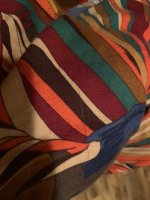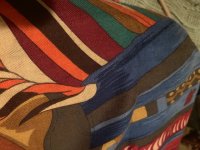Hello fellow scarfies! I have finally caved in to the cashmeres....and so here is my tale of not woe at the fixes I have done on my "starter" cashmeres. I wanted to share my methods here in case anyone else runs (ha ha) in to serious pull problems and wants an idea.
My first NTM CSGM was Zenobie, and I knew she was coming to me with some pulls, but only one was pictured. However, I knew it was a serious one. And it was. A broken thread. There was 1 more "lesser" pull with non broken threads and those are obviously the easiest to deal with.
(Aside-I have a long background in textiles and have for many years practiced textile weaving and dyeing and have a large floor loom and you can bet dealing with problems that occur while weaving is a skill you have to acquire. It has also helped me with the GM cashmere scarves since they are a fairly loose weave.)
So Zenobie's worst run had a pulled and broken thread.
View attachment 4532751
I ended up using a 10x jewelers loupe to get close viewing and thread a thin needle in the general direction of the herringbone weave (which is angled).
View attachment 4532750
The I threaded the loose end on to the eye and pulled it through. Repeated until I couldn't thread the broken thread any further, which was close enough for me! It doesn't really pose a huge problem in this situation with the fabric, but is a potential future weak spot. To truly fix it I would need to take a small piece from the hem, dye it to match the area, then work it in overlapping the broken ends.
View attachment 4532749
After:
View attachment 4532747
This was the other side of the broken thread pull. I basically worked from both sides to bring as much of the broken thread back in to line as possible and make the ends meet as close as I could.
View attachment 4532745
After
View attachment 4532752
And this one was not too hard. I just used the tip of the needle to create micro-pulls with the thread back in the other direction to make the original loop smaller with occasional tension adjustments and wiggling/massaging.
View attachment 4532748
You couldn't even see this one once I was done!
View attachment 4532746
 I keep hearing different accounts about stores repairing or not. I wonder if it depends on each store?
I keep hearing different accounts about stores repairing or not. I wonder if it depends on each store?
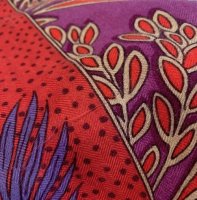
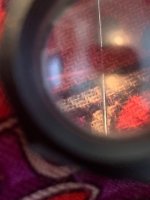
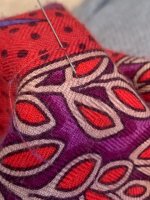


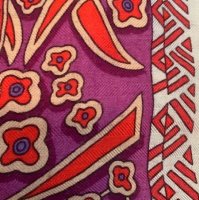
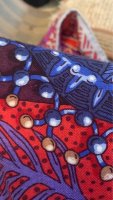

 )
)
